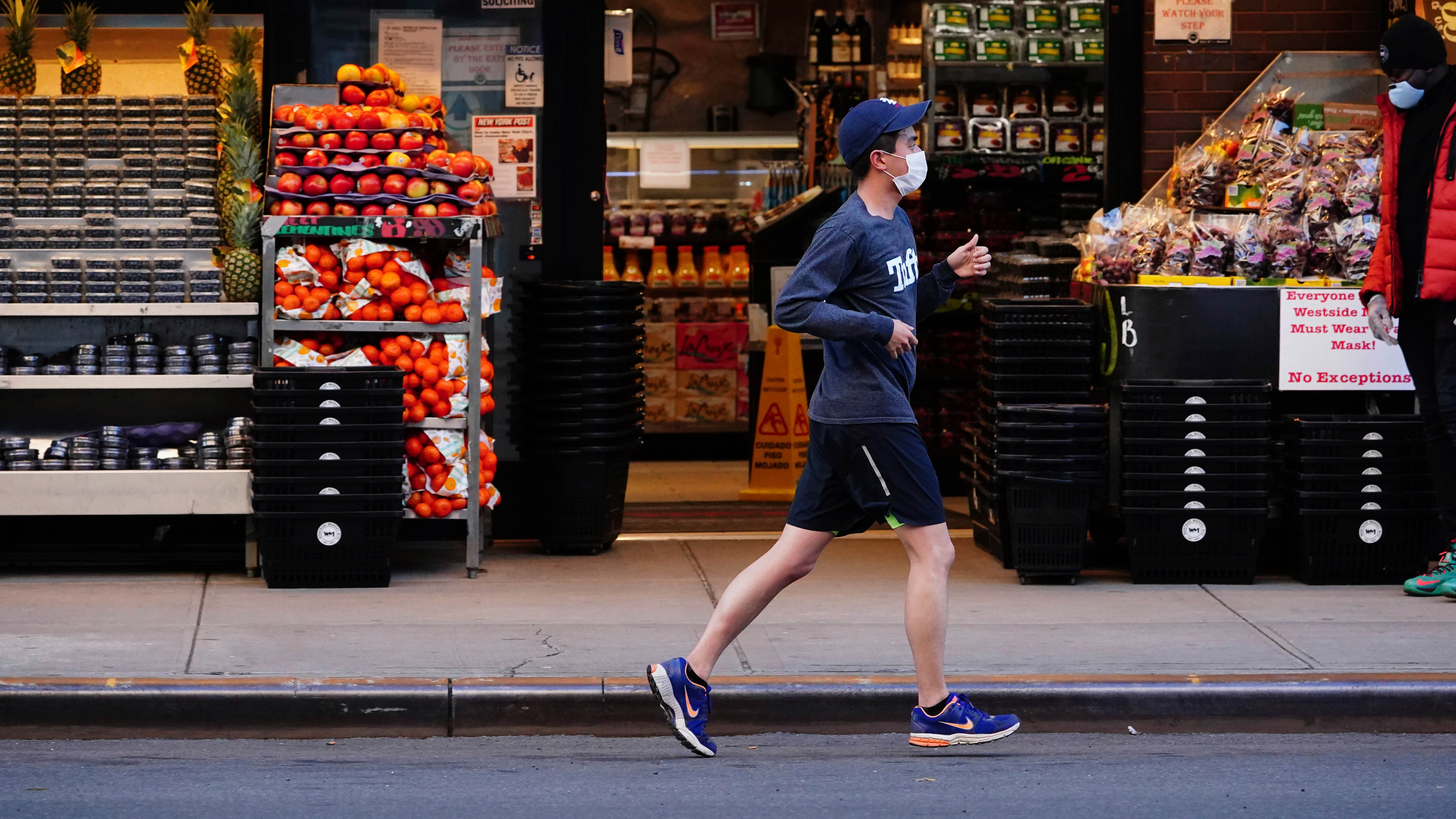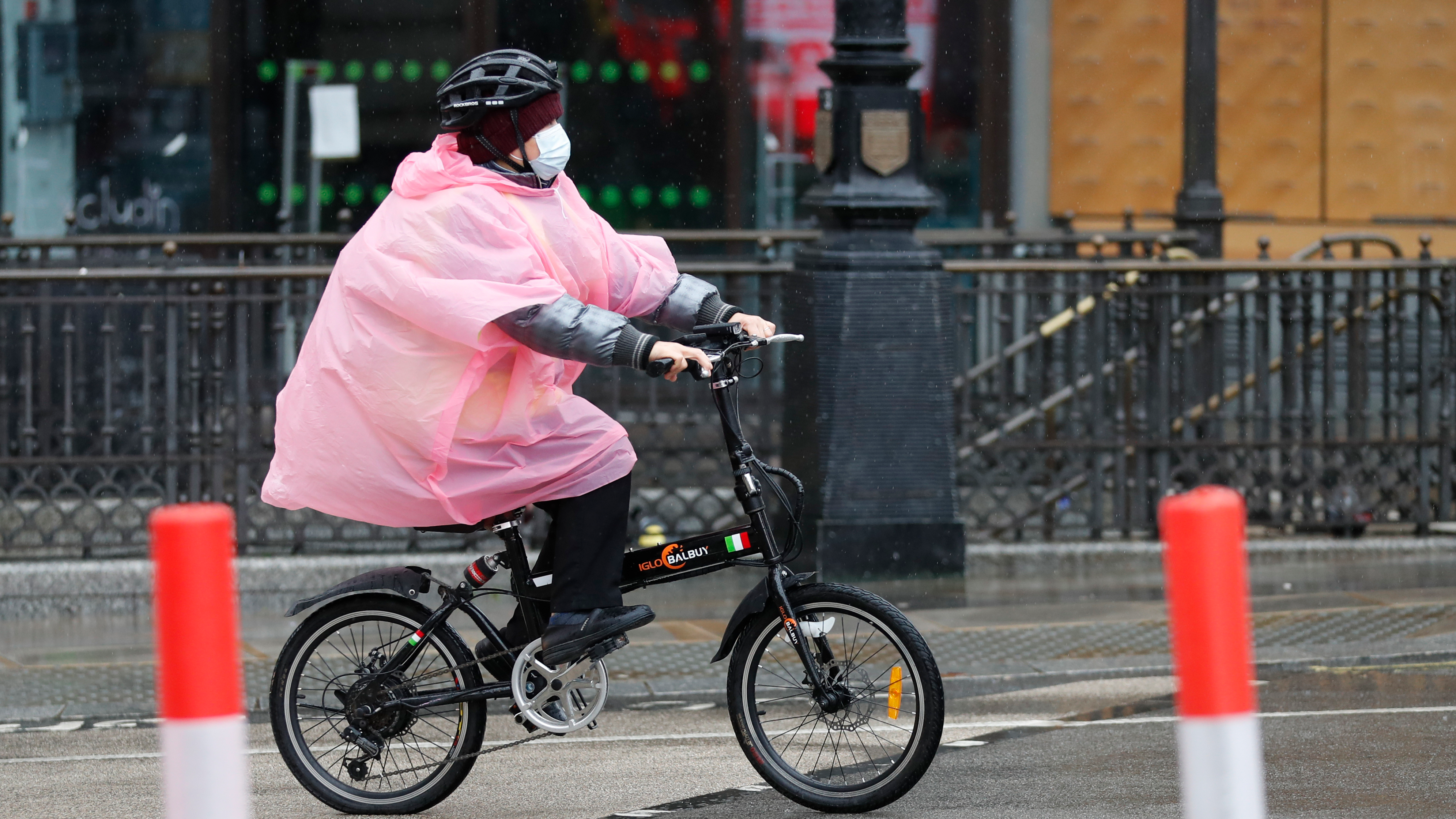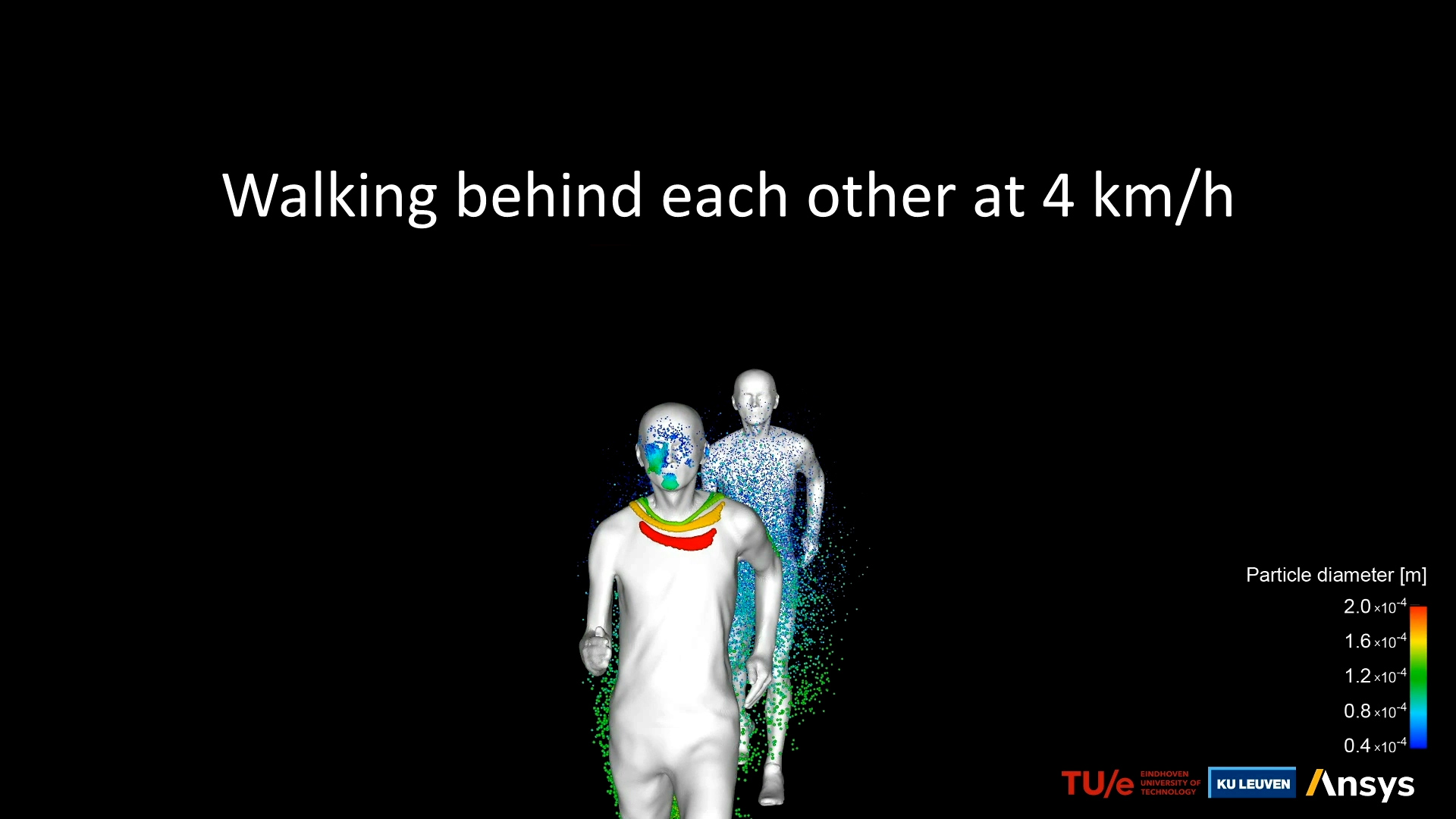When cities and countries started urging people to wear face masks as the pandemic began raging across the world, an exception was made for those exercising outdoors.
Jogging and cycling outdoors remain, even for some countries under strict national lockdowns, among the few activities people can still enjoy without having to wear a face mask.

A view of a person wearing a mask jogging during the pandemic on May 13, 2020 in New York City. / John Nacion / STAR MAX / IPx
A view of a person wearing a mask jogging during the pandemic on May 13, 2020 in New York City. / John Nacion / STAR MAX / IPx
But amid a steep rise in infections across Europe and new research shedding some light on how transmission works in different scenarios, countries are considering imposing new restrictions forcing people to wear a mask while exercising outdoors.
Face masks are already compulsory in outdoor settings in Spain and Italy, and France has made it mandatory for people jogging or cycling to wear masks if they can't keep a safe distance from people nearby.
The World Health Organization (WHO) has stated that people "should not wear face masks when exercising," as masks can reduce the ability to breathe when more oxygen is needed to support the physical effort.

A cyclist wrapped up against the rain and wearing a mask rides across Piccadilly Circus in London, in October 2020. / AP Photo / Alastair Grant
A cyclist wrapped up against the rain and wearing a mask rides across Piccadilly Circus in London, in October 2020. / AP Photo / Alastair Grant
But a study conducted by the Eindhoven University of Technology in the Netherlands has found that we could still be spreading and interacting with the virus while running or cycling outdoors, just in a different way than when we aren't moving at speed.
"Our intention was to see what is different when you are moving in terms of movement of droplets around you," says Professor Bert Blocken, lead researcher in the study.
The research used computational fluid dynamics or CFD to predict, using mathematical equations, how air flows around runners and cyclists. They found that a 'droplet cloud' forms behind joggers and cyclists, a so-called 'slipstream'.
"When you are moving forward and you're exhaling droplets, the droplets actually are very light," explains Blocken.
"So they will not keep moving along with you. You will actually leave them behind you in your trail."
When someone is walking behind you, it's likely they would walk through this droplet cloud.
"So this means that this social distance that we now know will not be the same, will not be this 1.5 or 2 meter when you include rapid movements," continues Blocken.
The distance considered safe to prevent the spread of the virus, according to Blocken, was calculated about 20 years ago for two people standing still and talking to each other in a windless situation.

People walking behind a person running can also walk through the 'droplet cloud' the person exercising is leaving behind them, with the potential risk of being infected with COVID-19. / Eindhoven University of Technology
People walking behind a person running can also walk through the 'droplet cloud' the person exercising is leaving behind them, with the potential risk of being infected with COVID-19. / Eindhoven University of Technology
But in the situation of a person walking or standing still being in the proximity of someone exercising, the safest position to be in is next to the person running or cycling, so as to avoid the droplet cloud behind them.
Blocken receives a lot of questions by concerned members of the public asking whether they should overtake other people when running, hold their breath while doing so or take a detour around them.
"Just stay out of the slipstream and then it's perfectly fine to overtake a person," says Blocken. "It's perfectly fine to be cycling even when it's a little bit crowded. As long as you stay out of the slipstream, at least don't stay in the slipstream for a long time."
Blocken advises to stay next to each other, rather than one behind the other to avoid the possible risk of infection.

But as it has been scientifically proven that runners and cyclists can potentially spread the virus in crowded situations, should governments move forward to make face masks mandatory for those exercising outdoors?
According to Leandro Pecchia, Associate Professor of Biomedical Engineering at Warwick University in UK, different types of face masks should be assessed for their capacity to allow breathing through them.
He said he'd wear his 'community' face mask (a cloth face covering) while jogging or cycling unless "you are alone and you are in a nice green area," in which case the use of a face mask wouldn't be as strict.
In case of contact sports, he believes face masks should be an indispensable requirement.
It's a different case entirely for professional sports, where Pecchia thinks face masks are likely not to be made mandatory. "Probably the strategy should then be just to test them as soon as possible and isolate and track [them]," he says.
Wearing a face mask while exercising certainly has its drawbacks - both surgical and cloth masks can get very damp and heavy with sweat, and easily slip off the nose when running. But wearing a face mask seems to be the safest choice when exercising around people, and experts say that ,eventually, with time, it's just another 'new normal' to get used to.

